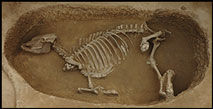Crossref Citations
This article has been cited by the following publications. This list is generated based on data provided by
Crossref.
Hou, Yanfeng
Campbell, Roderick
Zhang, Yan
and
Li, Suting
2019.
Animal use in a Shang Village: The Guandimiao zooarchaeological assemblage.
International Journal of Osteoarchaeology,
Vol. 29,
Issue. 2,
p.
335.
2019.
ANNUAL BIBLIOGRAPHY.
Early China,
Vol. 42,
Issue. ,
p.
347.
Li, Haichao
and
O’Sullivan, Rebecca
2020.
Diachronic change in the Shang dynasty ritual package.
Archaeological Research in Asia,
Vol. 23,
Issue. ,
p.
100210.
Li, Yue
Zhang, Chengrui
Wang, Zhen
Dou, Haifeng
Liu, Huan
Hou, Furen
Ma, Mingzhi
Qian, Yaopeng
and
Chen, Honghai
2020.
Animal use in the late second millennium BCE in northern China: Evidence from Zaoshugounao and Zaolinhetan in the Jing River valley.
International Journal of Osteoarchaeology,
Vol. 30,
Issue. 3,
p.
318.
Campbell, Roderick
Jaffe, Yitzchak
Kim, Christopher
Sturm, Camilla
and
Jaang, Li
2022.
Chinese Bronze Age Political Economies: A Complex Polity Provisioning Approach.
Journal of Archaeological Research,
Vol. 30,
Issue. 1,
p.
69.
Jaffe, Yitzchak
2023.
Food in Ancient China.
Ouyang, Xinyi
Li, Zhipeng
Cohen, David
and
Wu, Xiaohong
2024.
Dogs under urbanization: Isotopic insight from the Bronze Age Central Plains of China (ca. 2000–1000 BCE).
Journal of Anthropological Archaeology,
Vol. 75,
Issue. ,
p.
101608.
Li, Suting
Campbell, Roderick
Womack, Andrew
Sturm, Camilla
Wang, Mi
and
Huang, Kechu
2025.
Pottery analysis at Guandimiao: New insights into the rural economy of the anyang period.
Journal of Archaeological Science: Reports,
Vol. 62,
Issue. ,
p.
105006.
